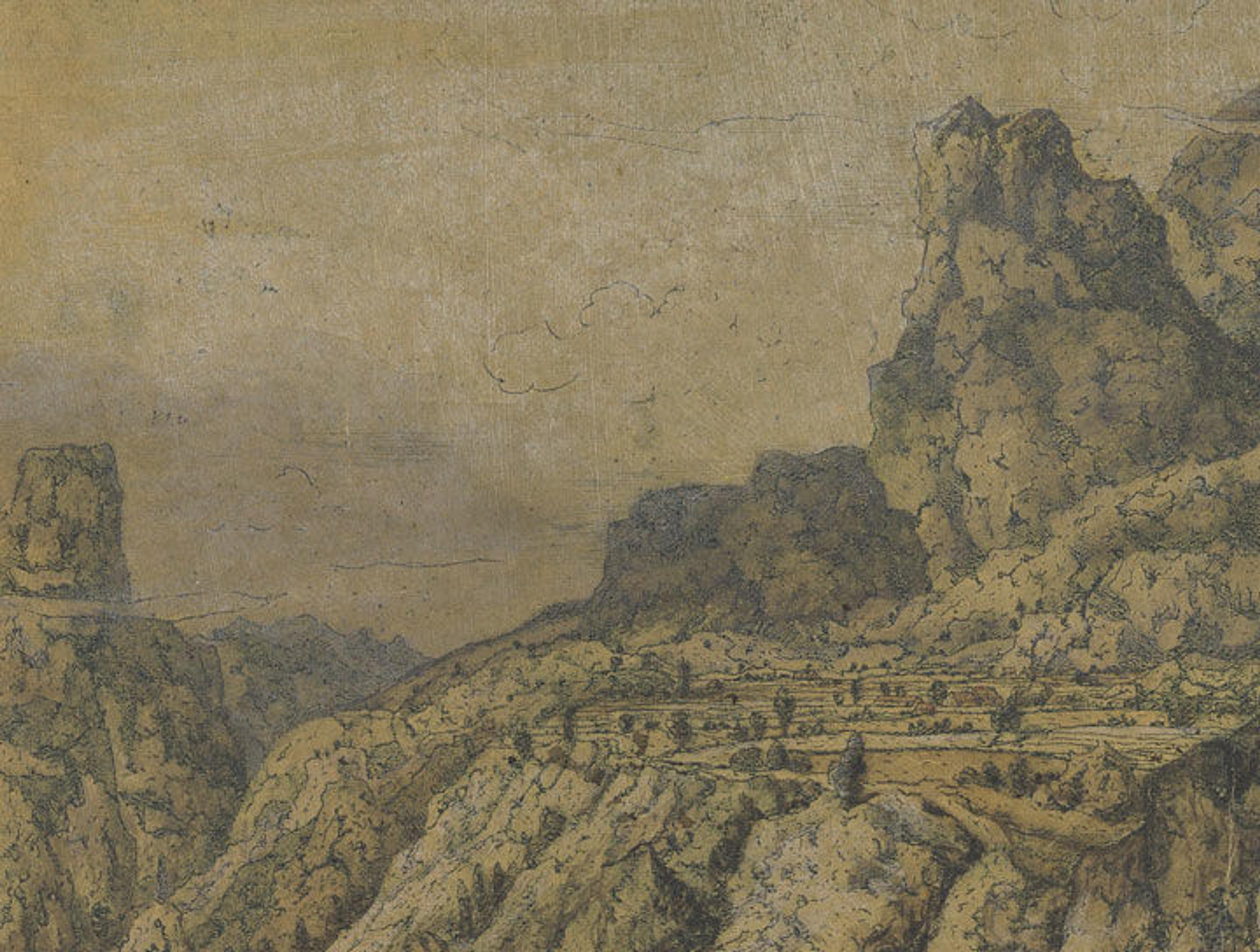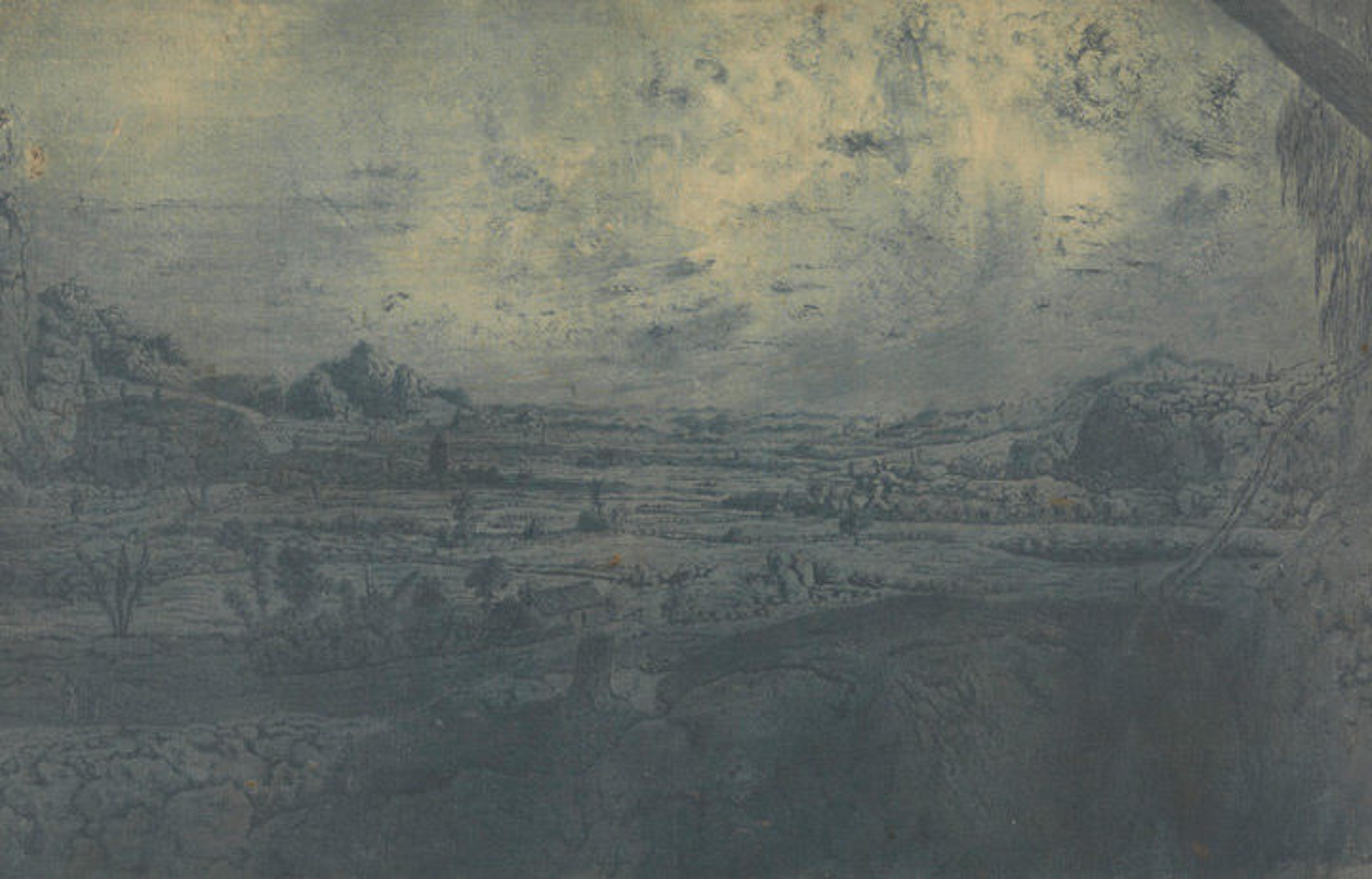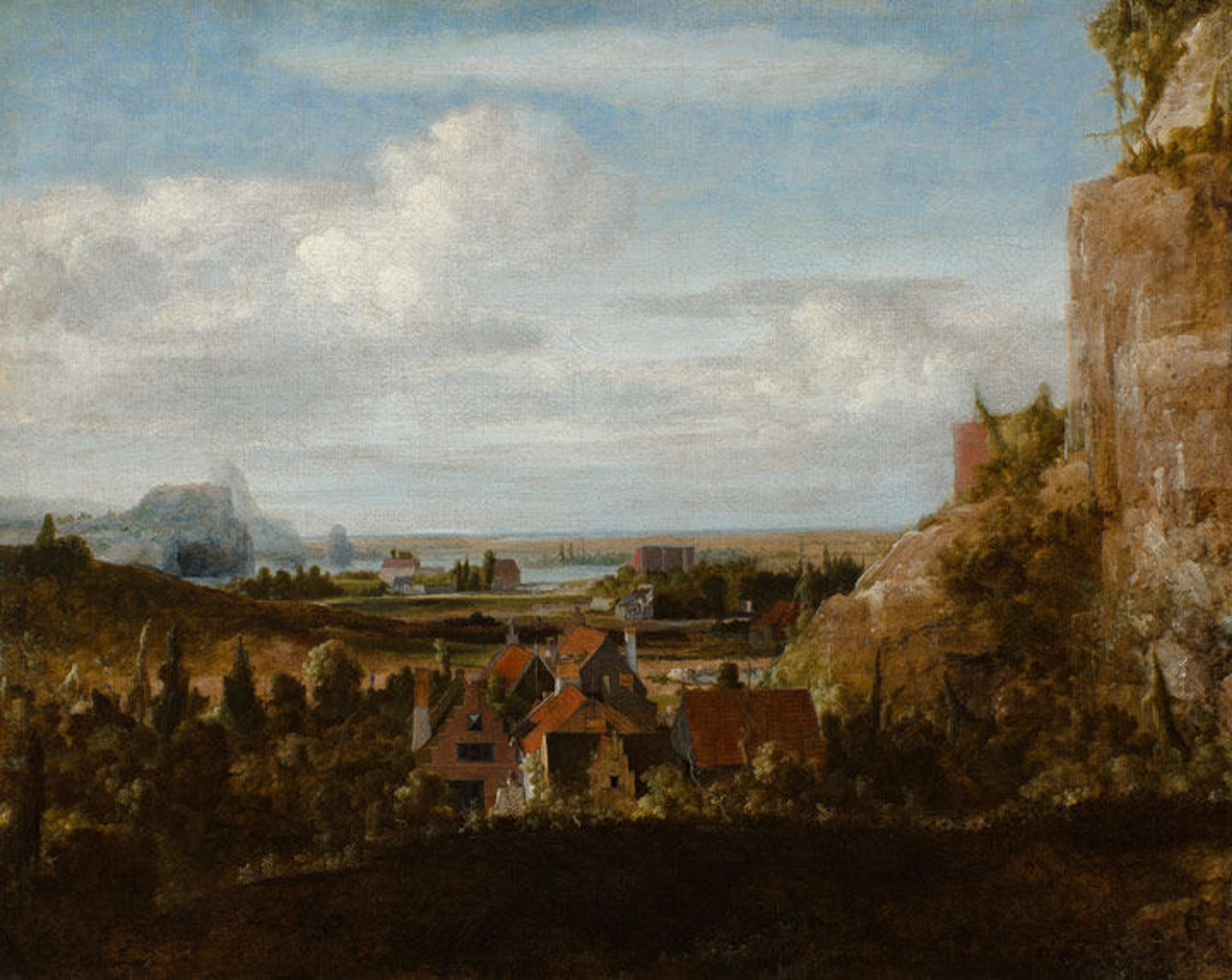Hercules Segers: An Imaginist in a Land of Realists

Hercules Segers (Dutch, ca. 1590–ca. 1638). The Tomb of the Horatii and Curiatii, ca. 1628–29. Line etching printed with tone and highlights, colored with brush; unique impression, Sheet: 5 1/16 x 7 11/16 in. (12.8 x 19.5 cm). Rijksmuseum, Amsterdam; on loan from the City of Amsterdam, collection Michiel Hinloopen (1619–1708), 1885 (inv. no. RP-P-H-OH-859)
«You may have never heard of Hercules Segers (ca. 1590–ca. 1638), yet he was one of the most fertile artistic minds of his era. Not your typical 17th-century Dutch artist, his work, made at the dawn of the Golden Age of Dutch art, seems out of its time. He created otherworldly landscapes of astonishing originality and his approach to printmaking was innovative and unorthodox, inventing techniques such as lift-ground etching that no one else would employ for another 150 years. Segers also printed in colors on painted papers to create works that a contemporary of his referred to as "printed paintings."»

Hercules Segers (Dutch, ca. 1590–ca. 1638). Mountain Valley with a Plateau, ca. 1625–30. Line etching, drypoint, and metal punch printed in blue-green, on a yellow-green ground, colored with brush; second state of two, sheet: 4 1/8 x 5 7/16 in. (10.5 x 13.8 cm). The Metropolitan Museum of Art, New York, Harris Brisbane Dick Fund, 1923 (23.57.3)
Segers was active at an artistic moment recognized for its realistic representation of everyday life, portraits, ship scenes, and landscapes drawn from nature. Think of the work of Vermeer, Rembrandt, Jacob Ruisdael, Frans Hals, and Jan Steen. In contrast to this movement in realism, Segers was an artist of the imagination.

Hercules Segers (Dutch, ca. 1590–ca. 1638). Mountain Valley with Fenced Fields, ca. 1625–30. Line etching and drypoint printed in blue, with plate tone, colored with brush; second state of two, Sheet: 9 13/16 x 15 13/16 in. (25 x 40.1 cm). Rijksmuseum, Amsterdam; transferred from the Koninklijke Bibliotheek, collection Pieter Cornelis Baron van Leyden (1717–1788), 1816 (inv. no. RP-P-OB-841)
Although Segers made a specialty of landscapes, he did not base most of his work on what he saw in nature. In fact, he never seems to have seen first-hand the large, rocky mountains he so often depicted, and he knew of the Alpine valleys only from landscapes prints made after designs by Pieter Bruegel the Elder.

Hercules Segers (Dutch, ca. 1590–ca. 1638). View through the Window of Segers's House toward the Noorderkerk, ca. 1625–30. Line etching; unique impression printed in black, Sheet: 5 9/16 x 6 15/16 in. (14.1 x 17.7 cm). Rijksmuseum, Amsterdam; on loan from the City of Amsterdam, collection Michiel Hinloopen (1619–1708), 1885 (inv. no. RP-P-H-OB-857)
On the occasions that he illustrated actual places, he still played with reality. In View through the Window of Segers's House toward the Noorderkerk, Segers etched the buildings that he could see from an upper-story window in his large house on the Lindengracht in Amsterdam. (He even included the window frame in the etching!) On the left stands the Noorderkerk, the North Church, which was currently under construction; in the picture, the windows are not entirely glazed and the church tower is missing. Yet, while he was so faithful to actuality of the scene in certain respects, Segers also replaced city buildings that should have appeared in the background with rows of trees.

Hercules Segers (Dutch, ca. 1590–ca. 1638). Houses near Steep Cliffs, ca. 1619–23. Oil on canvas, 27 9/16 x 34 1/8 in. (70 x 86.6 cm). Museum Boijmans Van Beuningen, Rotterdam Inv. no. 2525
In Houses near Steep Cliffs, Segers repeated more or less the same group of houses, but here he set them within a rocky landscape more typical of the lower Alps than anywhere in Holland, let alone in the bustling city of Amsterdam.
Rembrandt, a contemporary of Segers, was a great admirer of his work, which will be the topic of the next blog post in this series.
Related Link
The Mysterious Landscapes of Hercules Segers, on view at The Met Fifth Avenue from Febraury 13 through May 21, 2017
Nadine Orenstein
Curator Nadine M. Orenstein received her BA from Barnard College and her PhD from the Institute of Fine Arts at New York University, where she completed her dissertation, Hendrick Hondius and the Business of Prints in Seventeenth-Century Holland (Rotterdam, 1996). She has written and lectured extensively on 17th-century Northern European prints and drawings, and her publications include several volumes for the New Hollstein Dutch series on the prints of Hendrick Hondius, Pieter Bruegel the Elder, and Simon Frisius. Nadine's exhibitions at The Met include Pieter Bruegel the Elder: Drawings and Prints (2001), Hendrick Goltzius, Dutch Master (1558–1617): Prints, Drawings, and Paintings (2003), and Infinite Jest: Caricature and Satire from Leonardo to Levine (2011).